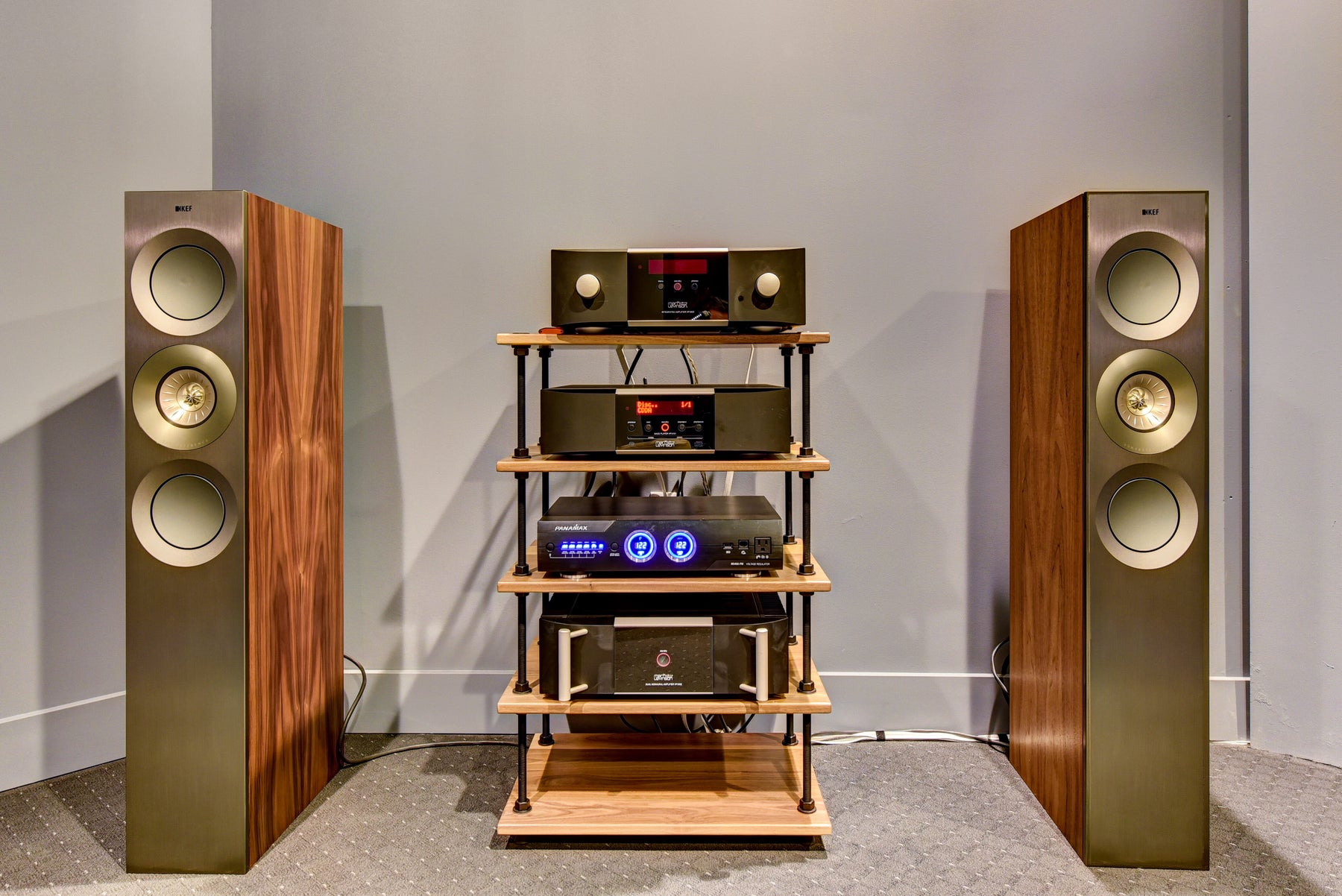
Two Channel Speaker Setup: A brief guide
Hello, and welcome to my first personal blog entry for Electronics Expo! I've been working for Electronics Expo for over 10 years and am passionate about all things audio. I pride myself on helping clients reach top performance with their home theater and two-channel systems. In this guide, I'll walk you through the steps we take in setting up speakers for a two-channel system, all of which will help you unlock the full potential of your audio equipment and create a captivating listening experience.
Choosing the Right Room
Before getting into the technical aspects of speaker setup, it's important to consider the room where your system will reside. Evaluate the room's size, shape, and acoustic properties. Look for ways to minimize unwanted reflections and echoes, and consider the impact of furniture placement and room layout on sound distribution.
Speaker and Listening Position Placement
To achieve accurate stereo imaging, proper speaker placement is essential. At Electronics Expo, we recommend following the "equilateral triangle" rule, where the speakers and listening position are all equally spaced from each other. For instance, if the speakers are placed 8' apart, then the listening position should be set up where it is 8' from each speaker. This helps create a well-defined soundstage and balanced imaging. The equilateral triangle is a great starting point for placement, but feel free to experiment with the distances to best suit your preferred sound.
Speaker Height and Stand Placement
The height of your speakers can significantly impact sound reproduction. Consider the ear level of your seated listening position and adjust the height of the speakers accordingly. Choose appropriate speaker stands or isolation pads to minimize vibrations and resonances, ensuring clean and precise audio reproduction.
Speaker Placement in Relation to Room Boundaries
The proximity of your speakers to room boundaries (walls, floor, and ceiling) affects the overall sound quality. Floor-standing and bookshelf speakers have different placement considerations. Experiment with different positions to minimize bass buildup or nulls caused by boundary interactions and achieve a more balanced frequency response. A quick note about the listening position - try not to place it in the direct center of the room. Rooms normally have bass nulls in the center, so moving your listening position forward or back can help bass response. Sitting too close to a boundary can also give off too much bass, so make sure to balance placement based on your preferences.
Room Acoustics and Speaker Placement
Addressing room acoustics can greatly enhance your listening experience. Consider incorporating room treatment elements such as acoustic panels to control unwanted reflections and improve sound clarity. Identify problem areas in your room and strategically place absorptive or diffusive panels to achieve a balanced acoustic environment. Explore room correction systems and digital signal processing (DSP) technologies for advanced acoustic optimization.
Wiring and Cable Management
Choosing the right speaker cables and connectors is essential for maintaining signal integrity. Choose good quality cables that suit your system's requirements. Proper cable routing and organization play a vital role in minimizing interference and signal degradation. Take the time to neatly arrange and manage your cables for a clutter-free setup.
Fine-Tuning and Speaker Calibration
After physically setting up your speakers, it's time to fine-tune their performance. Use an SPL meter to balance the levels of each speaker. Pay attention to speaker phase and time alignment to ensure accurate sound reproduction. Consider employing room correction software and measurement tools to further optimize the audio output.
Listening Test and Adjustments
Conduct critical listening tests to evaluate the performance of your speakers. Listen to a variety of music genres and pay attention to tonal balance, imaging, and detail. Make minor adjustments based on your personal preferences, keeping in mind that speaker setup is subjective. Remember - what sounds best to you is what you should do.
Conclusion
Setting up speakers for a two-channel system is a rewarding process that can significantly enhance your audio experience. By following this guide, you can embrace the joy of high-quality audio and let your favorite music come to life. If you have any questions or would like to audition speakers, feel free to contact me at our Wayne, NJ showroom: 973-785-1112.
Looking to purchase speakers? Start by checking out our large selection of floorstanding speakers.
